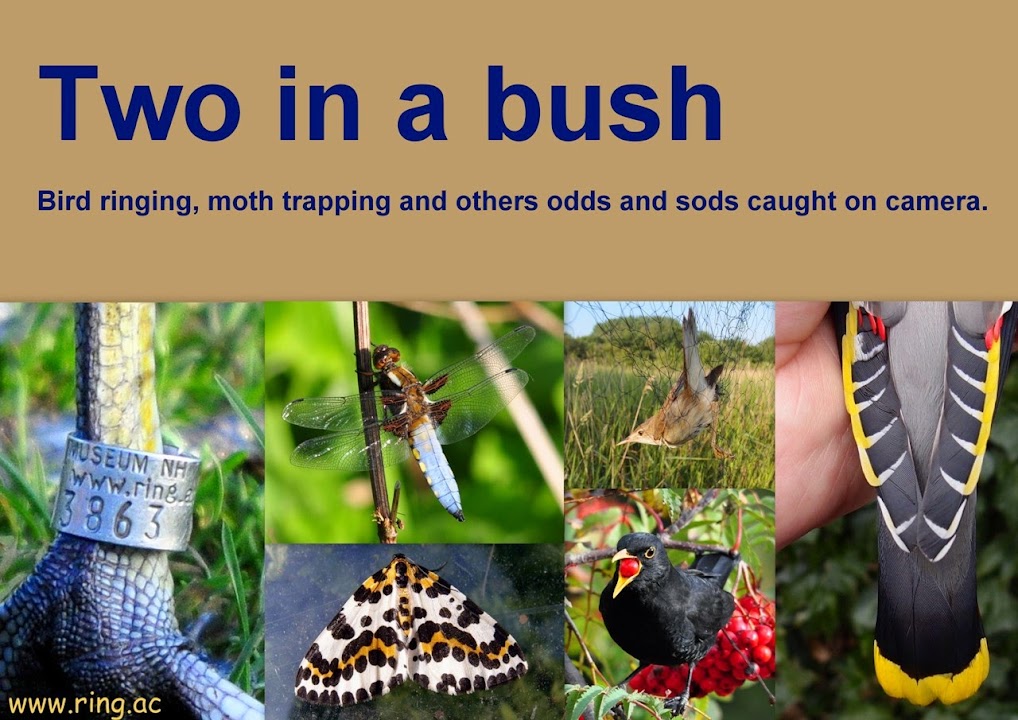While the conditions were good for ringing they were even better for flies and both me and the dog were soon being plagued by them. Most were what I would describe as housefly like sweat flies but while they distracted you in their hundreds the clegs and other biting insects quietly moved in for a blood meal, it was horrible. It was so bad I really wished I had one of those daft looking hats with the mesh that covers your head or a full beekeepers outfit for that matter. I hadn't brought any insect repellent with me either as every fly in the area quickly found out when they homed in on me and the dog.
I put the net up as quickly as the flies would allow and set a lure playing Linnet song. It wasn't long before I caught the first birds- a Linnet, 2 Chiffchaffs and a Reed Bunting; juvenile Chiifchaffs have a really curious nature and seem to be attracted to just about any playback lure as these 2 were. I then heard a Willow Tit call once from some scrub a little distance away so I put another lure out playing Willow Tit calls and within seconds another wandering juvenile Willow Tit was caught. Not a bad start despite all the flies.
 |
| Testing out the new net ride. |
 |
| Juvenile Linnet |
Ringing totals for Wednesday evening (25/06/14): Reed Bunting 1, Linnet 2, Willow Tit 1, Bullfinch 1, Chiffchaff 2, Willow Warbler 1, Swallow 4.
I went back again yesterday evening and tried a net in a different place for the Linnets and another for the Swallows but keeping well away from the bushes the Swallows roosted in the previous night. It was a bit breezier and the flies were much less of a problem plus I had come prepared with plenty of insect repellent. I think I had probably set up a little too late for the Linnets but I still caught 3 (2 juvs and an adult male). A similar number of Swallows gathered but this time 11 were caught because I had set a net in a more open area of willows.
Interestingly 4 of the 15 Swallows caught over the two evenings were adult males with the remainder being juveniles. I can only presume this is some form of nursery roost and the adult females are incubating eggs or brooding chicks from second nesting attempts in buildings on the surrounding farms. Obviously this is just speculation and perhaps some adults and the young from the early broods are simply preparing to migrate already?? Whatever the reason it is certainly the earliest summer Swallow roost I have ever seen by some margin and shows there is still so much we don't actually know about many of our common birds.
 |
| Juvenile Swallow. All the juveniles had prominent yellow gape flanges like this bird indicating they had fledged fairly recently. |
Although Linnets were the original target I am just as pleased to have found such an early Swallow roost along with the general mix of birds ringed over the two evenings. It is still very early in the season yet so I may catch more Linnets later in the summer and through into the autumn as the number of juveniles in the population increases. I will be back to find out and I may even invest in one of those sensible hats to get some chemical free protection from the flies.















































